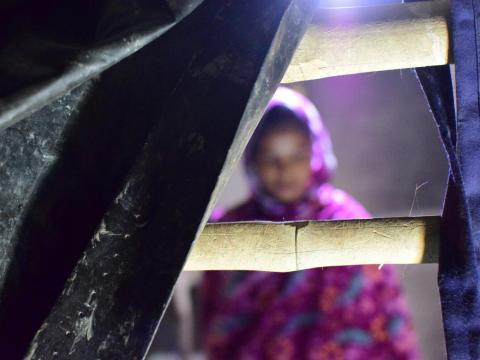Child Trafficking: What you need to know

Child trafficking is a form of modern-day slavery. Children are trafficked for purposes such as domestic labour, armed groups, criminal activity, and even adoption.
Even if they escape, the physical and emotional trauma has a long-term impact – the fear, abuse and stigma that children can experience may make it difficult for them to reintegrate in society and rebuild their lives.
The 30 July each year marks the UN World Day Against Trafficking in Persons with this year's theme focusing on the role of technology as a tool that can both enable and impede human trafficking.
Human Trafficking and Technology.
Many factors make children and adults vulnerable to human trafficking via the internet, mostly based on supply and demand tactics which the human traffickers use to lure them. The human traffickers take advantage of demands such as money, jobs and cheap labor services where they employ force, fraud or forceful coercion to lure vulnerable children and adults to satisfy their demands. The internet is also an easy playground for the traffickers as the victims' information is readily available such as the residential location, identity among other personal details which enhances the power over their victims.
According to the United Nations Office of Drugs and Crime, as much as technology may pose danger of human trafficking to vulnerable adults and children, it can also be used for the benefits of making social media a safe place for everyone by:
- Establishing high standards of cybersecurity, privacy by-design and safety-by-design in the digital services and products that children use, in order to minimize exposure of children to the risk of trafficking.
- Incorporate a gender- and child-sensitive perspective into strategies being developed to address the nexus between technology and trafficking in persons.
- Support technology-based solutions that address the global scope of trafficking in persons, such as data aggregation and data scanning tools that facilitate automatized information analysis in support of investigations to counter this crime and that are in full compliance with human rights and privacy rights.
- Take into consideration new methods of recruiting victims of trafficking in persons and take measures to develop targeted awareness-raising campaigns and specialized training for law enforcement and criminal justice practitioners on issues such as the use of the Internet by traffickers, in particular to recruit children.
- Use new technologies to raise awareness of trafficking in persons through activities such as virtual teaching, thus reaching a wider audience and increasing the possibility of exchanges of good practices.

Human trafficking in statistics
The UNODC’s Global Report on Trafficking in Persons 2020 reveals:
-
In 2018, around 50,000 human trafficking victims were detected and reported by 148 countries
-
50 per cent of detected victims were trafficked for sexual exploitation, 38 per cent were exploited for forced labour
-
Female victims continue to be the primary targets. Women make up 46% and girls 19% of all victims of trafficking
-
Globally, one in every three victims detected is a child
-
The share of children among detected trafficking victims has tripled, while the share of boys has increased five times over the past 15 years

How can this happen?
It’s hard to understand how it can happen. Humanitarian crises, such as violent conflicts and natural disasters, sometimes result in children being separated from their families, making them easier targets for traffickers.
In other instances, traffickers will prey on parents’ fears, giving false promises of a brighter future for their children. Parents may hand over their children not just for money, but in the misguided hope that their children will escape poverty and have a better life, with more opportunities.
Trafficking is lucrative. According to the International Labour Organization, it is the fastest growing and second-largest criminal industry in the world, after drug trafficking. Trafficking in people generates over US$150 billion a year.

World Vision prevention projects
While the international authorities encourage an end to trafficking, we are working directly with communities to help prevent trafficking, and supporting individuals who have been through it, helping them to rebuild and restore their lives.
We’re working with children, families, communities and governments to:
-
Provide safe havens for trafficked children
-
Give counselling and vocational training to help children recover
-
Reunite trafficked children with their families
-
Empower children with knowledge on safe migration practices
-
Build community awareness
-
Cooperate with authorities to identify and prosecute traffickers
-
Strengthen the overall protective environment for children in local communities

Safer communities: Preventing trafficking through sponsorship
Last year, half a million people in our sponsorship communities learnt how to access child protection services and information.
Every day:
-
182 children take actions to help end violence against children
-
100 children complete life skill training courses and the skills they gain empower them to protect and advocate for themselves and others
-
Our advocacy work with governments provides additional legal protection for 347,000 children
#EndHumanTrafficking #EndChildTrafficking
Find out more about how child sponsorship protects children against violence.